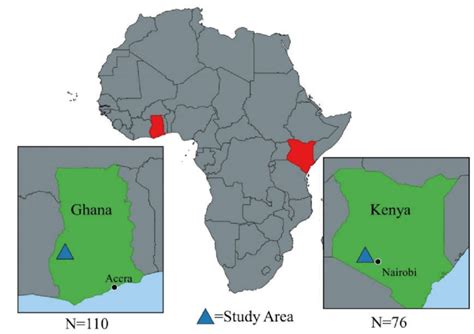Amid the bustling landscape of global trade, a seismic shift has reverberated across Kenya, Ghana, and Ethiopia. These African nations find themselves at the forefront of President Donald Trump’s new trade policy – a policy that promises to reshape economic landscapes and redefine international commerce.
As the winds of change sweep through these nations, whispers of uncertainty mingle with hopes for newfound opportunities. The announcement that goods from Kenya, Ghana, and Ethiopia will face a modest 10% tariff marks a pivotal moment in their economic trajectories. This rate stands in stark contrast to the heavier levies imposed on countries like Lesotho (50%), Madagascar (47%), Botswana (37%), Angola (32%), and South Africa (30%).
Trump’s Trade Strategy: A Closer Look
On a Wednesday not too long ago, President Trump unveiled his tailored tariffs with grand promises to reinvigorate American industry and bolster tax revenues. The baseline 10% tariff is set to take effect imminently, stirring concerns about potential disruptions in global trade dynamics. For developing countries like Kenya, this could spell challenges as they navigate an already turbulent economic terrain.
In his address heralding the new tariffs, President Trump declared April 2, 2025, as a watershed moment in America’s economic resurgence. However, beyond the jubilant rhetoric lies a complex web of implications for economies far beyond US borders.
African Economies Brace for Impact
For African nations such as Nigeria, Ghana, and Kenya – already grappling with economic strains – Trump’s tariff regime poses both political and economic risks. With approximately 30 African countries facing similar 10% tariffs under this new policy framework, questions loom large over how these economies will adapt to this shifting paradigm.
The ripple effects extend even further when considering existing agreements like the African Growth Opportunity Act (AGOA). Set to expire later this year in September 2025, AGOA has been instrumental in granting duty-free access to the US market for several sub-Saharan African countries. Notably among its beneficiaries are South Africa, Nigeria ,Ghana,and Kenya – leveraging this agreement primarily for exports ranging from vehicle parts to petroleum products.
Expert Insights: Navigating Uncertain Waters
Amidst these tides of change stands a diverse array of experts offering insights into what lies ahead for these African economies. Some foresee potential challenges in maintaining export competitiveness under heightened tariffs while others highlight opportunities for diversification into alternative markets.
Dr. Amina Juma,a renowned economist specializing in international trade dynamics,suggests that while initial shocks may be felt post-implementation,the resilience of these nations’ industries could pave the way for strategic recalibrations towards sustainable growth avenues.”This juncture demands a blend of agility and foresight from policymakers,” she remarks,”as they steer their economies through uncharted territories.”
As businesses assess the evolving trade landscape,some are exploring innovative strategies to mitigate tariff impacts through supply chain optimizations,capacity building initiatives,and enhanced market research endeavors.These proactive measures signal an entrepreneurial spirit poised to weather storms on unfamiliar horizons.




Leave feedback about this